Disconnecting devices on gas pipelines: types of valves and the features of its installation
It is no secret that gas distribution systems in villages, as well as apartment buildings and private houses, are a source of constant danger. The slightest leak of blue fuel can lead to serious problems, up to an explosion. And agree that this does not happen, it is extremely important to carefully and constantly monitor the condition of gas pipes and fittings on them.
One of the main locking elements here is a valve or valve, which, if necessary, turn off the gas in the pipe. And so that these disconnecting devices on the gas pipelines work properly, their selection and installation should be approached with all attention. Next, we will analyze all types of such equipment and the rules for its installation.
The content of the article:
Types of disconnecting devices for gas
Valves for gas pipelines are: shut-off, safety, emergency and reverse. To turn off the gas manually, the first version of the devices in question is used.
They are installed on pipes, so that, if necessary, quickly shut off it and stop the flow of methane or propane on a particular section of the gas pipeline.

Shut-off valves on gas pipelines are installed in the form of:
- gate valves;
- cranes;
- water locks;
- gates.
Each of these options is designed for its own section and type of pipeline with gas. For example, on low pressure gas pipelines, valves, taps or hydraulic locks are installed, and on highways high pressure - mainly only gate valves. And valves are generally used extremely rarely.
Stop valves are also divided into devices:
- hand held;
- automatic high-speed.
The former are usually used where the pipe shutoff speed is not very relevant. And the second ones with a magnetic or pneumatic drive are designed to quickly close the gas during accidents and detect leaks.
Option # 1 - Wedge Gate Valves
The most common disconnecting devices in the case of gas pipelines are gate valves, which move inside them parallel to the flow of the working medium. They consist of a housing, a cover with a valve, a spindle and an internal wedge-shaped shutter.

Wedge gate valves are divided into two subspecies:
- With non-extendable spindle.
- With extendable spindle.
The first version of these disconnecting devices is designed to be installed on underground gas pipelines in special wells. It is smaller in size and is usually equipped with an electric drive for remote control of the gas flow in the highway.
The second option is more durable and easy to operate. The retractable spindle is not exposed to the medium and lasts longer. Plus, the entire screw mechanism in this device is visible and available for repair.
Among the advantages of gate valves:
- extreme simplicity of the device of the locking device;
- low hydraulic resistance;
- small dimensions in height and length.
Their main disadvantage is a decrease in shutter tightness during clogging and / or wear of the seals.
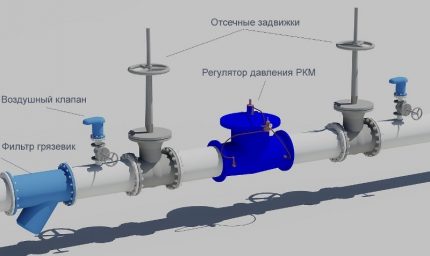
If the gas pipeline has an operating pressure of up to 6 kgf / cm2, then wedge gate valves on it are installed from gray cast iron. And if the pressure inside is more than 6 kgf / cm2then analogues of steel or malleable cast iron are used.
Option # 2 - cork cranes
Cranes have inside a metal plug rotating around its axis, which is tightly rubbed to the socket. When opening the disconnecting device, handle 900 relative to the gas flow, the plug does not prevent its passage through the valve, but when closed, it completely blocks the pipe.
Cork cranes are made of:
- brass;
- bronzes;
- gray cast iron;
- steel.
For internal gas pipelines and for turning off / on gas appliances it is recommended to take brass or bronze taps. Due to their high resistance to mechanical stress and increased anti-corrosion characteristics, they will last much longer than other options.
If the gas pipeline is more than 25 mm in diameter, then cast-iron taps are usually installed on it, since they are cheaper. And in high-pressure systems, steel devices are already used.
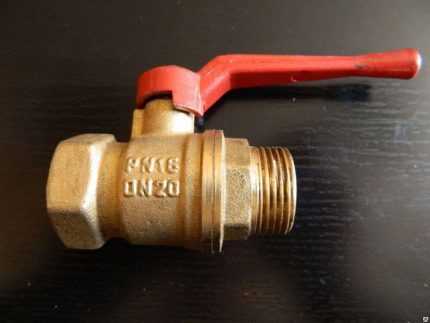
Among the advantages of shutoff valves:
- low hydraulic resistance;
- small overall dimensions;
- the ability to connect an electric drive for automation;
- speed of opening / closing (just turn 900 pen);
- simplicity of the device.
At the same time, these valves are characterized by low tightness in the closed state at high gas pressure in the pipes. Plus, with poor lubrication, the cork often “sticks” to the body. And in order to tear it, you have to make serious efforts, which negatively affects the service life of the valves.
According to the method of connection, the cranes are distinguished flange, pin and threaded (coupling). Moreover, the latter is prohibited by GOSTs to be installed on underground gas pipelines, since they can provoke a gas leak.
There are also ball valves. They are issued in DAt from 50 to 1400 and are intended for trunk pipelines. In house networks, they are rarely used because of their high cost and more complex design.
Option # 3 - water locks
In water locks, ordinary water is used as a shut-off element. This armature is intended for installation on underground low pressure gas pipelines and is exclusively below the level of soil freezing.It is highly reliable, but quite difficult to maintain.
Hydraulic locks are usually installed at the branches from the central highway to any object and at the entrances to the building. They are durable and very reliable. However, such fittings allow only completely blocking the gas, and not to regulate its flow.
Placing stop valves on the pipe
Before installation in the gas pipeline system, taps and valves are subject to external inspection, lubrication, gasket inspection and leak testing. At the same time, the place for installing the disconnecting device on the gas pipeline is selected in accordance with the recommendations SP 42-101-2003.
Installation of disconnecting devices on the gas pipeline is carried out underground - in a well or directly in the ground or above ground - in fireproof cabinets, on walls or pipes.
Installation of shutoff valves is carried out so that it can be inspected, serviced and, if necessary, dismantled.
The place to insert the disconnecting device into the gas pipeline is selected:
- on branches from the highway - outside the territory of the consumer and not further than 100 m from the distribution pipeline;
- in the presence of parallel pipes - at a distance convenient for servicing both devices;
- at the exits and inputs of hydraulic fracturing - at a distance of 5–100 meters from the point;
- when a gas pipeline crosses an overhead power line - outside its security zone;
- on the walls of private houses - at least half a meter from door and window openings;
- near the gas stove - on the side of the pipe at the level of the connecting fitting at a distance from the tile of 20 cm or more;
- at the gas stove or column with the upper wiring - at a height of 1.5 above the floor.
If the fittings are mounted at a height of more than 2.2 m, then a metal staircase and / or platform at this level should be provided.
If the wells are being installed, then they should be made from fireproof building materials. Suitable stone, brick, concrete, etc. But no wood or plastic.
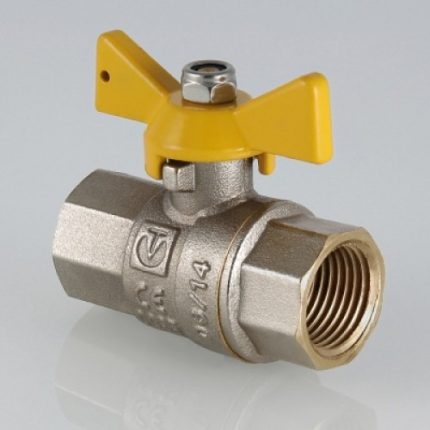
Sealing flange joints should be done with the following gaskets from:
- paronite - at a pressure of up to 1.6 MPa;
- oil and petrol resistant rubber - at pressures up to 0.6 MPa;
- aluminum - at any pressure;
- copper - at any pressure (except gas pipelines with sulfur dioxide);
- high and low density polyethylene, fluoroplastic - at a pressure of up to 0.6 MPa.
It is worth noting that rectangular and square type flange connections are quite difficult to process and it is difficult to ensure reliable tightness of the connection, so it is better to give preference to round flange connections.
Disconnecting devices must be installed:
- at the entrance to the building;
- before outdoor installation consuming gas;
- at the input and output of hydraulic fracturing;
- on long dead ends;
- on branches from the general highway to the village, quarter or enterprise;
- when the pipeline crosses railways and roads, as well as water barriers.
All installed slewing cranes must have a 90 degree handle rotation limiter.0, and latches - an indicator of the degree of opening.
And all devices with a diameter of up to 80 mm are required to have a risk on the case indicating the direction of gas flow.
Conclusions and useful video on the topic
The technology of control and shutoff valves:
A film about gas pipeline shut-off devices:
Gas shutoff valves differ in device, material of manufacture and type of connection. On internal gas pipelines, it is recommended to install ordinary cork taps, and for large trunk pipes, hydraulic locks and gate valves are more suitable.The place for installation of such devices is selected in accordance with the general rules for the design and construction of gas distribution systems.
You can leave a comment on this material, ask a question to experts or participate in the discussion - the contact form is located under the article.


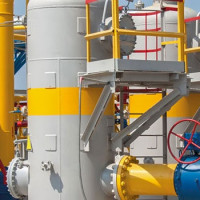 Gas fittings and equipment: varieties + features of choice
Gas fittings and equipment: varieties + features of choice 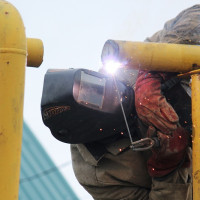 Gas pipe plug: varieties, selection tips and installation details
Gas pipe plug: varieties, selection tips and installation details 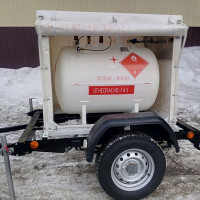 Mobile gas tank: purpose, design and installation features, placement requirements
Mobile gas tank: purpose, design and installation features, placement requirements  Smart gas meters: how smart flow meters are arranged and work + installation features of new meters
Smart gas meters: how smart flow meters are arranged and work + installation features of new meters 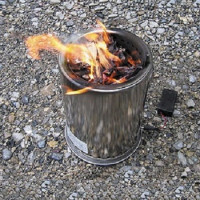 How to make a gas generator with your own hands: features of manufacturing a homemade device
How to make a gas generator with your own hands: features of manufacturing a homemade device 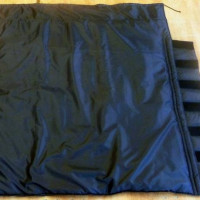 How does a thermal blanket work for gas cylinders: features of the device and use + selection tips
How does a thermal blanket work for gas cylinders: features of the device and use + selection tips  How much does it cost to connect gas to a private house: the price of organizing gas supply
How much does it cost to connect gas to a private house: the price of organizing gas supply  The best washing machines with dryer: model rating and customer tips
The best washing machines with dryer: model rating and customer tips  What is the color temperature of light and the nuances of choosing the temperature of the lamps to suit your needs
What is the color temperature of light and the nuances of choosing the temperature of the lamps to suit your needs  Replacement of a geyser in an apartment: replacement paperwork + basic norms and requirements
Replacement of a geyser in an apartment: replacement paperwork + basic norms and requirements